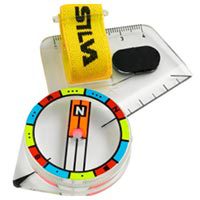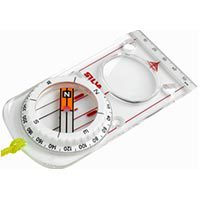Attending an Eventwhat happens at an organised orienteering event
- Home >
- Information >
- Attending an Event
This section describes what to expect at a full scale orienteering event. This includes some aspects you might not find at a Park-O event, although if you have been to a Park-O you will already be familiar with the basics.
Attending an Event
Select your event from the events list and check out the details given. Note that many orienteering events are in obscure rural areas so plan your journey to the event carefully.
At many events you can just turn up on the day and enter. However, it is recommended that you pre-register (or pre-enter) in advance. This helps reduce waiting times at registration and helps us gauge how many maps to print. The event page will have details of how to register or pre-enter. Some events will not offer entry on the day, and pre-entry is essential - please check before you travel to the event.
Novices will be able to get lots of help and advice from those at registration - ask when you arrive.
Please bring
- Comfortable clothes and footwear for walking or running in, that you don’t mind getting dirty. We do not recommend wearing shorts (unless your course is exclusively on urban terrain) as you could get cuts and scratches. Full leg cover is sometimes mandatory.
- A compass if you have one - not strictly necessary for easier courses but will make navigating much easier.
- A whistle is a useful safety measure if you get lost or injured. At some higher profile events you will not be allowed to start without one, but that would be unusual in East Anglia.
- A means to pay your entry fee, unless you have pre-paid. We can take card payments, unless we are in a forest without a phone signal, in which case you will need to remember to bring cash.
When you arrive you will get
- A map (normally printed on waterproof paper, with you course pre-marked). Usually you will only get to see your map after you have punched the start, but juniors on White and Yellow courses will be able to see their map before they start.
- A "dibber" (SI card) - a dibber is an electronic device that records when you go to a control, the modern equivalent of a control card. If you are hiring one of these, you must pick this up from registration when you arrive.
- Control descriptions - A printed list which tells you what you are looking for at each control site(e.g. path junction) and also used to check that the control you have found is the right one for your course. These may be handed out at registration or in the start lanes. There is usually a copy of the descriptions printed on the map, but having a separate copy avoids you having to keep unfolding your map to take a look. You will need some means to keep hold of the descriptions slip as you run - most orienteers use specially designed holders which fit on a wrist or sleeve.
Registration to Finish
The registration routine used will depend on the system used to record your passage around the course:
Electronic Punching - you carry an electronic punch (SI card, or "dibber" which you use to record your visit to each control point on the course. This system has almost completely taken over from...
Manual Punching - You carry a control card and a pin punch is provided at each control point to enable you to punch your control card and thereby record your passage round the course. (Each punch has a different pattern of pins!!) We sometimes still use this for junior events.
The basic process is:
- Check which course you want to run. If you have pre-entered and want to change which course you run, ask at registration - this is usually allowed, depending on map quantities.
- Fill out a registration slip if required (not needed if pre-entered)
- Show your completed slip to the registration team and pay for your entry.
- Collect your hire dibber (unless you are using your own).
- You are now free to start your run. Aim to arrive at the start in your pre-assigned start block time. This is normally not critical, but at bigger events will you may be given an exact time to start - don't miss your slot!
- At the start, the start official will ask you to clear then check your dibber using the electronic boxes provided. The dibber will not work unless this procedure is followed.
- When the start clock beeps, get ready and go on the long beep. Punch the start control, pick up your map, and run your course, looking for your next control kite each time and recording your arrival at each control point by dibbing.
- Don't forget to punch at the finish - your race time stops now.
- Go to download so that we know you are home safe and you can obtain your result. With electronic punching the record of your run is immediately available and the course results are usually available before you leave the event. Provisional results are usually available on the website the same day and will be finalised over the next couple of days.
Safety
When you have visited all the controls on your course, not forgetting the Finish, you visit the download area to have your electronic dibber "read". If you have hired a dibber, you return it here.
Even if you don’t find all the controls it is important that you report to download so that we (and your friends) know that you have finished and are not lying injured in the forest. If you lose your dibber you must tell the people at the finish / download.



